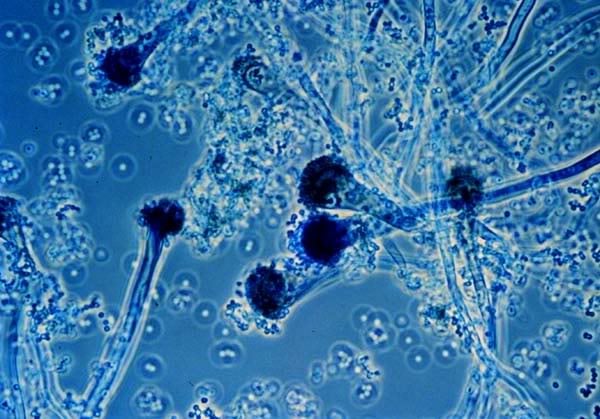
Hi everyone, Emma here! As a home décor enthusiast and someone passionate about creating healthy living spaces, I’m often asked about mold. And let’s be honest, it’s not the most glamorous topic. But, understanding the different types of mold, especially those that can impact our health, is crucial for maintaining a safe and beautiful home. Today, we’re tackling a common culprit: Aspergillus mold.
What is Aspergillus Mold and Why Should You Care?
Discovered back in 1729 by an Italian biologist (who knew mold had such a long history!), Aspergillus isn’t just one type of mold but a whole family with over 250 members! Imagine a family reunion with 250 relatives all looking slightly different – that’s Aspergillus for you. It can appear white initially, but as it grows, it transforms into shades of green, brown, black, or even yellow, depending on the specific family member, or “species,” we’re talking about.
Now, here’s the kicker: Aspergillus releases tiny spores that float in the air. And guess what? Studies suggest these spores are more concentrated inside our homes than outdoors. Yikes! While some Aspergillus species are actually used in food production (like citric acid – who knew?), others can pose serious health risks.

Aspergillus Hideouts: Where Does This Mold Like to Hang Out?
Think of Aspergillus as having a sweet tooth (or should we say, a “carbon” tooth?). It thrives in environments rich in carbon, like:
- Compost piles: Those nutrient-rich havens for your garden are like Aspergillus resorts.
- Rotting leaves and veggies: Decomposing organic matter is like an all-you-can-eat buffet for this mold.
- Starchy foods: Bread, potatoes, and other high-starch goodies left out too long can become Aspergillus breeding grounds.
But wait, there’s more! Some Aspergillus species aren’t picky eaters and can settle in less nutrient-rich areas like:
- Damp walls and carpets: Excess moisture is an open invitation.
- Doors, windows, and even pillows: Anywhere moisture lingers, Aspergillus can follow.

Aspergillus and Your Health: Separating Fact from Fiction
Let’s address the elephant in the room – the health risks. For most healthy individuals, breathing in a few Aspergillus spores isn’t a cause for panic. Our immune systems are usually strong enough to handle it. However, those with weakened immune systems are more vulnerable and might experience health issues, collectively known as Aspergillosis.
Aspergillosis can manifest in various ways:
- Respiratory infections: These can range from mild to severe and, in some cases, even spread throughout the body.
- Fungal balls: In rare instances, Aspergillus can form clumps called “fungal balls” inside body cavities like the lungs.
Common symptoms of Aspergillosis include:
- Fever
- Shortness of breath
- Coughing
- Chest pain
If you suspect you might have Aspergillosis, it’s crucial to consult a healthcare professional. Treatment typically involves antifungal medications.
Adding another layer of concern, some Aspergillus species produce nasty toxins called mycotoxins. Exposure to these mycotoxins can lead to various health problems, so it’s best to avoid them altogether.

Evicting the Unwanted Guest: How to Get Rid of Aspergillus Mold
The first rule of mold removal is: Don’t panic! Here’s a step-by-step guide to tackling Aspergillus:
- Find the Source: Mold loves moisture, so your first mission is to identify and fix any leaks, condensation issues, or areas with poor ventilation.
- Ventilation is Key: Ensure your home has proper ventilation to prevent moisture buildup. Consider installing a heat recovery ventilator (HRV) if needed. Think of it as giving your home a fresh breath of air!
- Suit Up!: Before tackling any mold, protect yourself with a mask, gloves, and goggles. You don’t want to inhale those pesky spores.
- Small Mold, DIY Approach: For small areas (less than a few square feet), you can usually handle the removal yourself. Use a non-toxic, registered fungicide, following the instructions carefully. Remember, the goal is to kill the mold, not spread it further, so avoid disturbing the area too much.
- Large Mold, Call the Pros: If you’re dealing with a larger infestation, it’s best to call in professional mold removal experts. They have the experience and equipment to handle it safely and effectively.

Prevention is Key: Keeping Aspergillus at Bay
Remember that old saying, “An ounce of prevention is worth a pound of cure”? It holds true for mold too! Here are some proactive steps to keep Aspergillus from moving in:
- Control Moisture: Keep indoor humidity levels below 50% using dehumidifiers, exhaust fans, and proper ventilation.
- Clean Regularly: Regular cleaning with a mold-killing cleaner can prevent mold from taking hold. Pay special attention to areas prone to moisture, like bathrooms and kitchens.
- Don’t Provide a Feast: Store food properly in airtight containers and discard any perishable items promptly.
- Address Leaks Immediately: Fix any leaks in your roof, plumbing, or windows as soon as they occur. Remember, moisture is mold’s best friend!
Resources for Further Exploration:
- EPA Mold Guide: https://www.epa.gov/mold/mold-course-chapter-2 – The Environmental Protection Agency offers comprehensive information about mold, its health effects, and remediation.
- CDC Mold Information: https://www.cdc.gov/mold/faqs.htm – The Centers for Disease Control and Prevention provides valuable resources on mold prevention and control.
- Your Local Health Department: Your local health department can provide specific guidance and resources for your area.
Remember, a healthy home is a happy home! By understanding Aspergillus mold and taking steps to prevent and remediate it, you can create a safe and beautiful living space for you and your loved ones.








